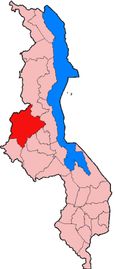Chambwe School completed on Feb 7, 2011!
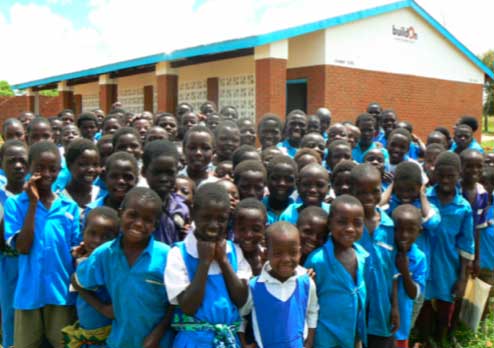
Students in front of their new school in Chambwe
The Chambwe school project broke ground on December 6th, 2010 and was completed on February 7, 2011. During these ten weeks of construction the people of Chambwe contributed a total of 4,387 volunteer workdays to the project. Before starting construction they also collected local materials for the project, and molded and fired more the 50,000 clay bricks. At the same time, buildOn delivered construction materials from town. On groundbreaking day, buildOn staff and community members from Chambwe met to sign a covenant outlining the community's responsibilities. These included providing the land for the school, unskilled labor, high quality local materials, project management and a commitment to educating boys and girls equally.
The new school block in Chambwe has two classrooms with a poured concrete floor and foundation and a tin roof. Inside, each classroom has two permanent chalkboards. The buildOn team in Malawi reports that this project was completed on schedule due to the dedication of the volunteers from the community. Towards the end of construction attendance on the worksite dropped, but at their regular meetings the 12 member leadership committee from Chambwe was able to address the issue and boost attendance again. Blair Nkhokwe, a parent and member of this committee, said: “The school project instilled a sense of unity and hope in us; we have learned that when united, communities can develop their area.”
The children of Chambwe are now learning inside their new school each day. Students who previously attended class under temporary shelters can now be sure that school will be in session even during the hot and rainy seasons. A Community Education Program (CEP) for adults will also be offered at this school. The CEP is a two-year program facilitated by members of the community. These facilitators are trained by buildOn to teach literacy and basic arithmetic through lessons on a series of nine themes: our goals, our village, the environment around us, education, health, income, human rights and responsibilities, citizens’ rights and responsibilities, and planning for the future. Facilitator training in Chambwe is currently underway, and the CEP will begin in April 2011.
The new school block in Chambwe has two classrooms with a poured concrete floor and foundation and a tin roof. Inside, each classroom has two permanent chalkboards. The buildOn team in Malawi reports that this project was completed on schedule due to the dedication of the volunteers from the community. Towards the end of construction attendance on the worksite dropped, but at their regular meetings the 12 member leadership committee from Chambwe was able to address the issue and boost attendance again. Blair Nkhokwe, a parent and member of this committee, said: “The school project instilled a sense of unity and hope in us; we have learned that when united, communities can develop their area.”
The children of Chambwe are now learning inside their new school each day. Students who previously attended class under temporary shelters can now be sure that school will be in session even during the hot and rainy seasons. A Community Education Program (CEP) for adults will also be offered at this school. The CEP is a two-year program facilitated by members of the community. These facilitators are trained by buildOn to teach literacy and basic arithmetic through lessons on a series of nine themes: our goals, our village, the environment around us, education, health, income, human rights and responsibilities, citizens’ rights and responsibilities, and planning for the future. Facilitator training in Chambwe is currently underway, and the CEP will begin in April 2011.

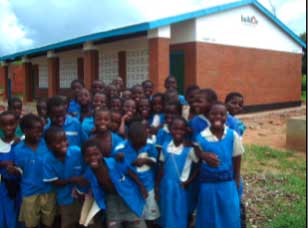
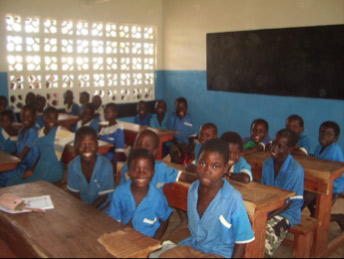
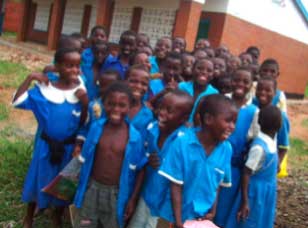

Chambwe Community Member Profile
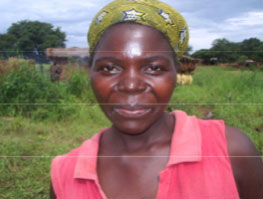
Arriving at the school, no teachers were in sight; their makeshift classroom was water logged and the fear of going back home and crossing the dreaded Bua shredded Maria. Hopeless she became- she had to endure the nightmare of crossing the unpredictable Bua again and the reality of her unpredictable education. Even when she managed to cross the bridgeless Bua, often no
learning took place during that very rainy season due to the shortage of classroom blocks. She was not alone in this predicament, and as a result many students dropped out of school that year.
Now Maria is married and two of her children are at Chambwe Primary School. She worked on the buildOn construction site almost each and every day, and she always worked hard to motivate her fellow women.
“I failed to complete my education and I don’t want the same for my children” she said as she joined a group of colleagues in song one day as they worked. The song spoke about hard work and educating the girls, the future of Chambwe. These women see hope in the future of their children and take pride in their community. After sharing her story, Maria said “I will enroll in the adult literacy classes once they start to improve my English and arithmetic,” smiling a joyful and proud smile.
Chambwe Community Profile
Chambwe is located in the southeastern part of Kasungu district, in the central region of Malawi. This area is comprised of 40 villages with 5 Group Village Headmen and a population of over 5000. Most of these people live in grass-thatched houses built on their farmland and made of clay bricks.
The primary activities of the people in these villages are agriculture and small livestock keeping. Families practice subsistence farming, passing down their land from one generation to the next. Maize and tobacco are the main crops in the area. Maize is grown primarily for consumption, and tobacco is sold on Malawi’s auction floors to foreign companies.
The climate is tropical with the hottest months being from September to December. The rains are good and usually start in December and last through April, though drought periods in the past have contributed to degraded farmland. Most of the land is overused, so every year the villagers buy fertilizer to enrich the land for their crops.
The primary activities of the people in these villages are agriculture and small livestock keeping. Families practice subsistence farming, passing down their land from one generation to the next. Maize and tobacco are the main crops in the area. Maize is grown primarily for consumption, and tobacco is sold on Malawi’s auction floors to foreign companies.
The climate is tropical with the hottest months being from September to December. The rains are good and usually start in December and last through April, though drought periods in the past have contributed to degraded farmland. Most of the land is overused, so every year the villagers buy fertilizer to enrich the land for their crops.
Prior School Conditions
There are two permanent school blocks in Chambwe, each with 2 classrooms, constructed with support from International Development Assistance (IDA). Other classes are taught under tree shelters. During the hot and rainy seasons children sometimes abandon their classes while at other times classes are not taught at all. A nearby church is used for National Examinations. There are also 4 permanent latrines, built by UNICEF in 2006.
Current enrollment at the school is at 1040 learners, 565 girls and 475 boys. There are 6 government teachers at the school teaching grades 1 through 8.
Current enrollment at the school is at 1040 learners, 565 girls and 475 boys. There are 6 government teachers at the school teaching grades 1 through 8.
